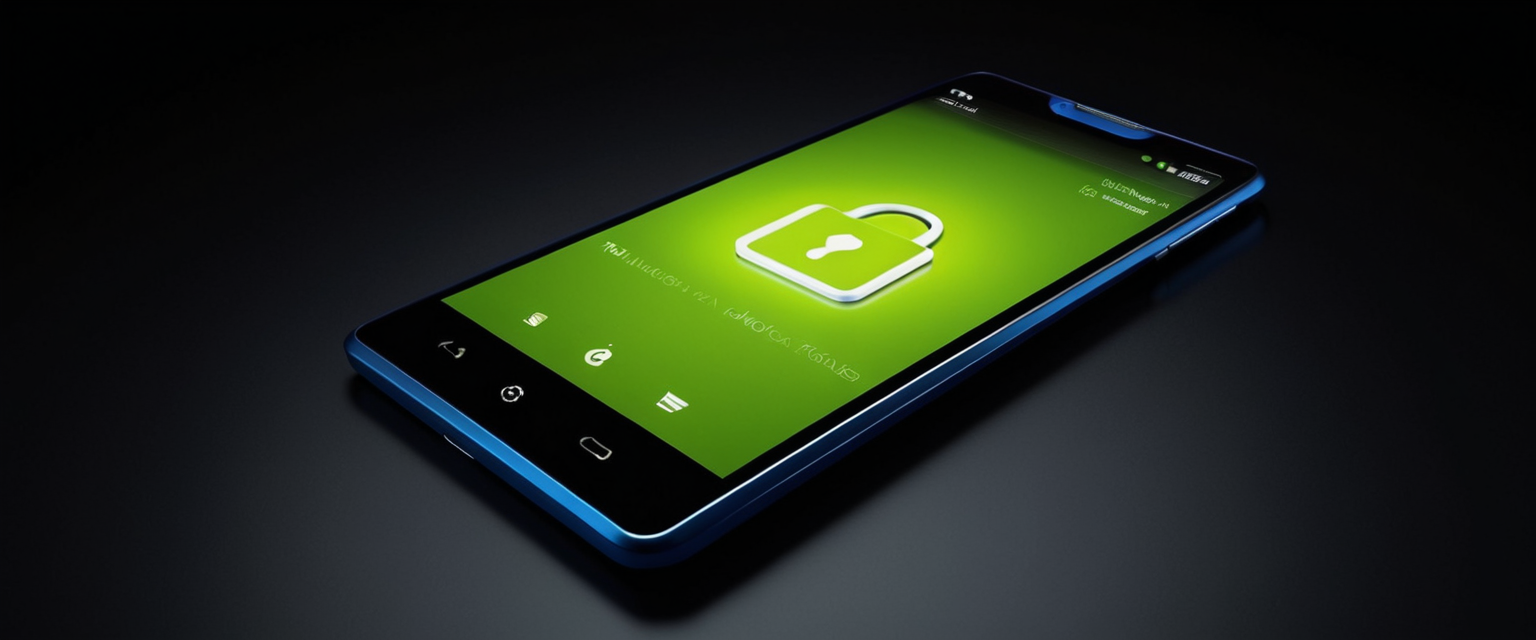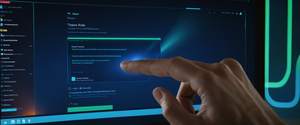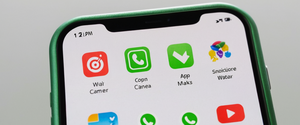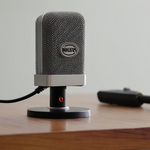
This comprehensive report examines the permission mechanisms for camera and microphone access across all major operating systems, analyzing how modern devices balance user privacy with functionality. The analysis reveals that contemporary operating systems have implemented increasingly sophisticated permission models to give users granular control over sensitive hardware resources. Modern privacy architectures incorporate multiple security layers including system-level permissions, application-level permissions, browser-specific controls, and visual indicators to inform users when their camera or microphone is in use. This report synthesizes findings from multiple platforms and discusses the evolution of these systems, their implementation challenges, and best practices for managing device security across Windows, macOS, iOS, Android, Linux, and Chrome OS environments.
Windows Camera and Microphone Permission Architecture
System-Level Permission Structure in Windows 10 and Windows 11
Windows operates a hierarchical permission system that distinguishes between different application types and provides multiple levels of access control. In Windows 11, users navigate to Start > Settings > Privacy & security > Camera to access camera permissions, while Windows 10 users find these settings at Start > Settings > Privacy > Camera. The Windows permission architecture implements at least three distinct permission layers that users must configure separately. First, there exists a device-level toggle that enables or disables camera access for all applications on the system. Second, users can control which applications from the Microsoft Store receive access to the camera through individual application toggles. Third, there is a separate control specifically for desktop applications that are not installed through the Microsoft Store, allowing broad authorization for all desktop applications rather than individual granular control.
The distinction between Microsoft Store applications and desktop applications represents a fundamental architectural choice in the Windows permission model that reflects the security design philosophy of the Windows ecosystem. Desktop applications, which include web browsers like Microsoft Edge and video conferencing tools like Microsoft Teams, cannot have their permissions individually toggled in the same manner as Microsoft Store applications. This design decision means that if a user enables desktop application access to the camera, all desktop applications theoretically have the ability to request camera access, though the user interface does not provide granular per-application control at the operating system level. This architectural feature has important implications for users who want precise control over which specific applications can access their camera and microphone devices.
Visual Indicators and User Notification Systems
Windows implements a comprehensive system of visual indicators to inform users when their camera or microphone is actively in use. If a device has a built-in camera light or LED indicator, this light will automatically illuminate whenever the camera is in active use by any application. For systems without a dedicated physical indicator light, Windows provides a notification to alert the user when the camera turns on or off. Additionally, a microphone icon appears in the taskbar’s notification area whenever the microphone is being used by an application. These indicators serve a critical privacy function by allowing users to detect unauthorized or unexpected access to their sensitive hardware resources and take immediate action if needed.
Exceptions to Standard Permission Settings
One important exception to Windows camera permissions involves Windows Hello, which is the biometric authentication feature available in Windows 10 and later versions. Windows Hello uses the camera for facial recognition login authentication even if the general camera access permission is disabled globally on the device. However, if Windows Hello is turned off by the user, the system cannot access the camera for authentication purposes. This exception was implemented to ensure that users can still benefit from facial recognition login security without needing to permanently enable general camera access for all applications. Additionally, the Camera application itself represents a special case where permissions are managed differently from standard applications.
Organization-Managed Restrictions
For devices that are part of an organization or have work accounts added to personal devices, camera and microphone controls may be restricted by organization policies. In these scenarios, users see a notification at the top of the camera or microphone settings pages stating “Some settings are managed by your organization,” which indicates that an administrator has implemented device management policies that override user-level settings. This organizational management capability allows IT administrators to enforce company security policies regarding camera and microphone access across their fleet of managed devices.
macOS Camera and Microphone Permission Implementation
System-Level Permission Management in macOS
Apple’s macOS implements a permission model accessed through System Settings > Privacy & Security > Camera or Microphone. Unlike Windows, which separates Microsoft Store applications from desktop applications, macOS presents a unified permission interface where users view all applications that have requested camera or microphone access. The macOS design philosophy requires applications to explicitly request permission before accessing sensitive hardware resources, and applications only appear in the Privacy settings list after they have requested access for the first time. This approach provides a different privacy model than Windows, as users cannot preemptively grant or deny permissions before an application actually requests them.
macOS implements what could be described as a “permission-on-first-request” model that contrasts with systems that allow preemptive permission management. When an application that wants to use the camera or microphone launches for the first time, the system presents a permission request dialog explaining why the application needs access to the specific hardware resource. The user must explicitly grant or deny this request, and their choice is then remembered for future use. The application then appears in the Privacy settings list, allowing the user to change their previous decision at any time by toggling the application on or off in the Privacy settings panel.
Privacy Indicators in macOS
macOS provides visual indicators comparable to Windows but with different visual implementations. A green light beside the camera indicator shows when the camera is actively in use. When the camera turns on, this green light illuminates, and it turns off when users close all applications that are using the camera. For the microphone, an orange indicator appears at the top of the screen whenever an application uses the microphone without simultaneously using the camera. Additionally, Control Center in macOS displays a message informing users when an app has recently used the camera or microphone, providing awareness of recent access even after the device has stopped recording.
Known Issues with macOS Camera and Microphone Permissions
The search results reveal that numerous users have encountered problems with camera and microphone permissions on macOS, particularly with newer versions such as Monterey and newer. A recurring issue involves applications like Discord and Zoom requesting permission to access the camera or microphone, yet when users navigate to the Privacy and Security settings, these applications do not appear in the Camera or Microphone permission lists. This prevents users from seeing or modifying permissions that they expected to manage. Unlike the Accessibility settings in macOS, where users can manually add applications using a “plus” button, the Camera and Microphone permission sections do not provide a mechanism to manually add applications that have not yet appeared in the list.
The underlying cause of this issue appears to be related to how applications request and system initialization of permissions. Some applications fail to properly trigger the permission request dialog, which means the system never registers the application as having requested that particular permission. Consequently, even though the application tries to access the camera or microphone, it does not appear in the permission settings for users to manage. Users have reported that workarounds include completely quitting applications, rebooting the computer, and launching applications again to trigger permission prompts, or in some cases creating new user accounts on the macOS system to test whether the permission system functions correctly in a fresh environment.
iOS and iPadOS Permission System Architecture
Core Permission Framework and User Interface
iOS and iPadOS implement a permission system accessed through Settings > Privacy & Security, where users can tap on camera, microphone, or other hardware features to view and modify permissions for installed applications. The iOS permission model shares some similarities with macOS in that applications must request permission before accessing sensitive resources. When an application first attempts to access the camera or microphone, the system displays a permission request dialog that explains why the application needs access to that resource. This explanatory text, known as a “purpose string,” is mandatory for iOS applications and provides transparency about the intended use of the resource.
Visual Privacy Indicators in iOS and iPadOS
iOS provides highly visible indicators when applications are using camera or microphone resources. When an application uses the camera, a green indicator appears at the top of the screen. Whenever an application uses the microphone without simultaneously using the camera, an orange indicator appears. Additionally, Control Center displays a message informing users when an application has recently used either the camera or microphone. These indicators represent one of the more prominent privacy notification systems available on modern mobile devices, ensuring that users have clear visibility into when their sensitive hardware resources are being accessed.
iOS 18 Update Issues and Troubleshooting
Following the release of iOS 18, numerous users reported experiencing issues where apps could no longer access the camera or microphone, even after appropriate permissions had been granted. Users described scenarios where applications would request permission to use the camera or microphone, yet even after granting permission in the Privacy settings, the applications would show a black screen or indicate missing permissions when they tried to access the hardware resources. Troubleshooting steps that have proven effective for some users include navigating to Settings > Screen Time > Content and Privacy Restrictions, toggling this option on, and then ensuring that Camera is enabled under the Allowed Apps and Features section. Additionally, some users have found that a complete device restart resolves the permission access issue, which was unexpected given that the permission settings appeared to be configured correctly.
Android Permission System Evolution and Current Implementation
Runtime Permissions and Permission Groups
Android has evolved its permission system significantly, with runtime permissions being introduced in Android 6 and representing a major shift in how the system controls access to sensitive resources. Prior to Android 6, applications declared all requested permissions in the manifest file, and users had to grant all permissions at installation time with no ability to selectively grant or deny specific permissions. Runtime permissions enable users to grant or deny specific permissions only when an application actually attempts to use the resource, providing much more granular user control. Camera and microphone permissions fall into the category of particularly sensitive permissions that require explicit user approval before an application can access them.
Android 11 introduced further granularity through “one-time permissions” that allow users to grant permission for a single use session rather than granting persistent permission. When an application requests location, microphone, or camera permissions, users can now select “Only this time” in the permission dialog. When users choose this option, the application receives temporary one-time permission that is automatically revoked when the user closes the application or after a specified time period. This feature acknowledges that users may not feel comfortable making permanent decisions about what a website or application can access, particularly for sensitive resources like the camera or microphone.
Privacy Dashboard and Permission Visibility in Android 12 and Later
Android 12 and later versions provide a Privacy Dashboard that displays when applications have accessed location, camera, or microphone information. The Privacy Dashboard presents a timeline showing when different applications accessed particular types of data, helping users understand which applications are accessing sensitive resources and when these accesses occurred. In Android 12 and later, privacy indicators appear in the status bar showing when an application is actively using the camera or microphone. These indicators must be displayed with high visual priority in the status bar, typically appearing at the rightmost position in the top-right corner of the device. The indicators are mandatory for all original equipment manufacturers implementing Android 12 or later.
The color requirements for these indicators specify that both camera and microphone indicators must be green or a shade of green. When users click on these indicators, they see a dialog showing which applications are currently using the camera, microphone, or both. The system distinguishes between active usage (applications actively using the resource) and recent usage (applications that used the resource within the past fifteen seconds). This visual distinction helps users understand whether resource access is currently ongoing or was merely recent.

Android Device-Wide Permission Toggles
Starting with Android 12, users can enable and disable camera and microphone access for all applications on the device using single toggle switches accessible from Quick Settings or the Privacy screen in System Settings. When a user turns off camera access globally, applications receive a blank camera feed instead of actual camera data, preventing them from capturing video. When microphone access is globally disabled, applications receive silent audio instead of actual microphone input. Motion sensors are rate-limited when microphone access is disabled, regardless of whether applications have declared the `HIGH_SAMPLING_RATE_SENSORS` permission. When users turn off access to camera or microphone and then launch an application that requires access to these resources, the system reminds them that the device-wide toggle is turned off, allowing them to make an informed decision about whether to enable these permissions.
macOS Ventura Permission Issues and Solutions
Compatibility Problems with Older Devices
Users running macOS Ventura 13.3 and later with OpenCore Legacy Patcher have reported significant issues with camera and microphone permissions. Applications like WebEx, Zoom, Microsoft Teams, and WhatsApp request permission to access the microphone and camera, but the applications fail to appear in the System Settings Privacy and Security camera and microphone sections, preventing users from managing these permissions through the standard interface. This issue appears to be related to how newer versions of macOS implement permission requirements, which have become incompatible with certain legacy Mac hardware implementations or non-standard system configurations.
The technical solution to this problem involves using a command-line utility called `tccplus` to manually add permissions for specific applications. Users can open the Terminal and use commands like `./tccplus add Camera WhatsApp` to manually grant camera permissions to applications that do not appear in the standard Privacy settings interface. To identify the correct application identifier for use with this command, users can run `osascript -e ‘id of app “WhatsApp”‘` to retrieve the application’s bundle identifier, which is then used in the tccplus command. While this solution is functional, it requires technical command-line knowledge and represents a workaround rather than an intuitive user-facing interface for managing permissions.
Linux and Ubuntu Permission Systems
Snap Interfaces as Permission Controls
Linux distributions, particularly Ubuntu, implement a different permission model than mainstream operating systems through Snap interfaces that function as permission controls for applications packaged as snaps. When an application in snap format attempts to access particular resources, permission is subject to plug and slot mechanisms. Applications declare required resource access through “plugs,” and the system provides access through “slots” when appropriate. The Camera interface allows applications to take photos, while the Microphone interface permits applications to use the microphone.
Ubuntu implements a two-layered permission system combining Snap interfaces with PolicyKit controls. PolicyKit gives user accounts the ability to perform particular system-wide actions such as installing or removing software. Both systems involve authentication prompts to ensure that users consciously approve permission requests. The separation between video recording and camera access in Ubuntu’s Snap interface represents a deliberate design choice where applications requesting video recording permissions should only receive microphone access when actively recording video. This prevents applications from having microphone access when they are not actively recording video, which aligns with the principle of least privilege by limiting unnecessary resource access.
Fedora and Persistent Permission Issues
Users of Fedora Linux have reported ongoing problems with camera access permissions where the camera application displays an error stating “Missing Camera Permission. Allow camera usage in Settings,” but the Privacy and Security settings already show camera access enabled. Even after adding user accounts to the video group and manually loading the UVC (USB Video Class) kernel module using `sudo modprobe uvcvideo`, some users continue experiencing permission denials. These issues suggest that Linux camera permission management involves complex interactions between user group membership, kernel modules, application permissions, and system configuration that are not always clearly documented or intuitive for users.
Chrome OS and Chromebook Permission Management
Privacy Controls Architecture on Chrome OS
Chrome OS implements camera and microphone permission controls through a settings interface accessed by clicking the time in the bottom-right corner, then selecting Settings, and navigating to Privacy and Security > Privacy controls. The system supports several permission states for camera and microphone access: users can set permissions to “On” to allow access, “Off” to block access, “Ask” to have the browser request permission when needed, or “Block” to prevent access even if requested. These settings apply separately to Chrome browser and web applications versus Android applications running on the same device.
Chrome OS implements device-level controls that take precedence over application-specific permissions. If users disable “Camera access” at the device level in Privacy controls, this blocks access at all levels and services, regardless of individual application permissions. The system provides granular control where individual applications can be assigned different permission states even when the global camera access is enabled. For web applications in the Chrome browser, users can change camera permissions either in Chrome browser settings or in the system Privacy controls, with both interfaces offering equivalent functionality. Users should verify that any physical camera switch on their Chromebook is turned on, as hardware-level switches take precedence over all software-based permissions.
Browser-Level Permission Management
Permission Mechanisms Across Different Browsers
Web browsers implement their own permission management systems that operate independently of operating system permissions. Users must grant permission at both the operating system level (if required by the OS) and at the browser level before a website can access camera or microphone resources. In Mozilla Firefox, users can manage camera and microphone permissions through the Settings menu by navigating to Privacy & Security, then scrolling to the Permissions section, where they can manage camera and microphone permissions. Firefox displays websites with saved permissions and allows users to block or clear permissions for specific sites.
Google Chrome implements site-specific permission management through settings accessible by clicking the three-dot menu and selecting Settings, then navigating to Privacy and Security > Site Settings. Under this section, users find Camera and Microphone options that display all websites where permissions have been granted or blocked. Users can modify permissions for specific websites by clicking the arrow next to the website entry and changing the permission state. Chrome allows users to select a default camera and microphone for the browser to use when websites request access.
Permission Persistence and Browser Data Clearing
Research on browser permission mechanisms reveals significant differences in how different browsers and operating systems handle permission state persistence when users clear browsing data. In normal browsing modes of Chrome and Edge, microphone and camera permissions generally persist even after users clear browser data such as history, settings, and cookies. Firefox similarly maintains permission states across browser data clearing. However, iOS browsers exhibit different behavior, with Safari being unique among the tested browsers in how it handles permission persistence. The variation in permission persistence across browsers and operating systems creates complexity for users who may expect permission states to be cleared when they clear other browsing data.
JavaScript-Based Camera and Microphone Access
getUserMedia() API and Permission Enforcement
The `getUserMedia()` JavaScript method provides developers with access to user camera and microphone resources directly from the browser, enabling functionality like video conferencing, live streaming, photo capture, and video recording. However, accessing these sensitive resources through JavaScript requires multiple gatekeepers that protect user privacy. First, the webpage must be served over HTTPS or from a local resource like `localhost` or file URLs, as `getUserMedia()` is only available in secure contexts. Second, Chromium browsers enforce a Permissions Policy (formerly called Feature Policy) that can restrict access to camera and microphone features, with some contexts like cross-origin iframes having restrictive policies by default.
Users must grant explicit permission at both the browser and operating system levels before `getUserMedia()` can access camera or microphone resources. Browser-level permission dialogs vary between browsers, with Chrome and Firefox maintaining persistent permissions by default while Safari exhibits different persistence behavior. Operating system level permissions are particularly prominent on macOS, where every non-Safari browser requires individual permission grants from the user, with the permission dialog appearing only after manual request in System Settings. This layered approach ensures that users have multiple opportunities to control and audit what resources websites can access.
Future Permission Mechanisms
The WebRTC standards community is exploring a future `
Permission Request Design and User Experience
Timing Considerations for Permission Requests
The design of permission request systems significantly affects user experience and the likelihood that users will grant appropriate permissions. Permission requests fall into two categories: context-related requests that occur when a user selects a feature requiring that permission, and system-initiated requests that are programmed to appear at specific times. Context-related permission requests are less likely to surprise users because the request appears directly after user action indicating they want to use a specific feature. System-initiated requests often require additional context and can be more disruptive because they may appear at times inconvenient to the user’s current task.
Research on mobile app permission design indicates that users often feel uncomfortable, confused, and irritated when permission requests are poorly designed. Users may consider uninstalling applications and switching to competitors if permission requests are intrusive or lack clear justification. Effective permission request design should avoid showing all permissions at once, instead asking only for core permissions essential to application functionality when the app first launches. Additional permissions should be requested only when users need new functionality that requires those permissions. This staged approach to permission requests gives users a sense of control and helps them understand why each permission is necessary.

Device Selection in Permission Systems
A specific challenge in permission system design involves allowing users to select which physical device should be used when multiple cameras or microphones are connected to a device. Websites and applications need to enumerate available devices before calling `getUserMedia()`, but immediately exposing every device would provide tracking opportunities by creating a stable fingerprint for device identification. Modern browsers therefore implement a rule where device enumeration is only permitted after `getUserMedia()` has been called, requiring users to grant permission before their list of connected devices becomes visible.
This design decision creates a user experience challenge where websites cannot pre-populate device selection dropdowns with all available cameras and microphones until after users have already granted permission. Solutions being explored include making device selection secondary to initial permission granting, with settings pages allowing users to select which camera or microphone to use after the initial permission dialog has been accepted. Another proposed solution involves future browser features that might embed native camera and microphone mute toggles with device selection options directly in the browser UI, putting device selection responsibility back in the browser rather than requiring websites to build their own selection interfaces.
Physical Security Measures and Hardware Solutions
Physical Webcam Covers and Microphone Blockers
Physical obstruction represents one of the most straightforward approaches to preventing unauthorized camera or microphone access, as it prevents malware or rogue applications from capturing data even if they gain access to hardware resources. Many security experts, including Facebook founder Mark Zuckerberg and former FBI director James Comey, reportedly cover their webcams with tape or use slide-on physical blockers. Slide-on camera covers designed specifically for this purpose are inexpensive and provide instant peace of mind by creating a physical barrier that prevents video capture. However, physical covers for microphones are more problematic because built-in microphones are often designed to continue functioning even when partially obstructed, so that users do not accidentally silence calls with misplaced fingers.
Users should exercise caution when using physical camera covers to ensure they do not prevent their device from closing properly, as even thin materials can potentially damage laptop displays if they extend beyond the bezel. Apple specifically recommends against covering cameras on macOS devices for this reason. However, thin dark-colored tape can serve as an effective temporary solution without causing device damage. For external microphones, the most reliable approach is simply to unplug them when not in use, completely disconnecting the hardware from the system.
Hardware Kill Switches as Firmware-Level Protection
Some manufacturers have implemented hardware kill switches that provide the most robust protection against unauthorized camera and microphone access by physically severing the circuit at the hardware level. Purism’s Librem laptops offer kill switches for wireless connectivity, Bluetooth, camera, and microphone that users can physically toggle to completely disconnect these devices from the system. This approach eliminates the possibility of malware or unauthorized software enabling access to these resources, as no amount of software exploitation can override a physical circuit disconnection.
However, the practical implementation of hardware kill switches in consumer devices has proven more challenging than anticipated. NovaCustom attempted to develop hardware kill switches for their laptops starting in April 2024 but ultimately decided not to release the product due to space constraints in laptop cases, rapidly rising development costs, and concerns about switch reliability. The purchase price of physical switches alone exceeded one hundred euros per unit, and the switches sometimes failed to operate properly in testing, making them unsuitable for a product designed to provide privacy and security where reliability is essential. These challenges suggest that while hardware kill switches represent an ideal privacy solution, manufacturing and cost constraints limit their availability in mainstream consumer devices.
Firmware and BIOS-Level Controls
UEFI/BIOS Camera and Microphone Disabling
Many computers, particularly business and laptop models, provide the ability to disable built-in cameras and microphones through UEFI or BIOS settings accessible at device startup. Users can disable cameras, front cameras, rear cameras, infrared cameras, and microphones directly through firmware settings, and these settings take precedence over operating system controls. When disabled at the firmware level, camera and microphone hardware cannot be activated regardless of what the operating system or applications attempt to do.
Microsoft Intune’s Device Firmware Configuration Interface (DFCI) enables organizations to manage UEFI settings through mobile device management policies, allowing administrators to remotely disable cameras or microphones across their fleet of managed devices. This firmware-level control is particularly valuable because it survives operating system reinstallation and other user actions that might otherwise enable disabled devices. DFCI prevents malware from communicating with operating system processes that might re-enable disabled hardware, and the trust chain uses public key cryptography rather than depending on local UEFI password security.
Malware and Unauthorized Access Threats
How Malware Accesses Camera and Microphone Resources
Cybercriminals exploit multiple attack vectors to gain unauthorized access to computer cameras and microphones. The most common approach involves tricking users into downloading malware through suspicious links or attachments in emails and messages. Once malware is installed on a device, it can exploit vulnerabilities in applications or the operating system itself to gain access to camera and microphone hardware without proper authorization. Remote access trojans (RATs) represent a particular threat category where attackers can take complete control of a device including its camera and microphone after the malware is installed.
Port forwarding and Peer-to-Peer (P2P) networking mechanisms designed as useful tools for remote access and easy sharing have become technical backdoors that sophisticated attackers can abuse. Once hackers intercept and gain access to these networking structures, they can leverage them to establish remote access to devices. Leaked documents have revealed that government agencies like the NSA have developed malware specifically designed to turn computer microphones into surveillance bugs (CAPTIVATEDAUDIENCE) and cameras into spycams (GUMFISH).
Best Practices for Protecting Camera and Microphone Resources
Users should implement multiple protective measures working together to defend against camera and microphone hacking. Covering the camera with dark tape or a physical blocker provides protection against video capture, though it does not prevent audio recording through the microphone. Using anti-malware software that includes webcam detection capabilities helps identify if malicious software attempts to access camera or microphone hardware. Keeping all software and firmware updated is critical, as manufacturers regularly release security patches addressing vulnerabilities that attackers could exploit to gain camera or microphone access.
Users should be wary of suspicious links and attachments in emails and text messages, as these are common attack vectors for malware distribution. If users suspect they may have been compromised, they should contact the FBI’s Cybercrimes Unit for assistance. Avoiding default passwords and using strong passwords for both computer logins and wireless routers reduces the attack surface available to potential attackers. Disabling camera and microphone access through operating system settings for applications that do not require these resources eliminates unnecessary risk.
Organization and Enterprise Permission Management
Microsoft Intune and Mobile Device Management Controls
Organizations using Microsoft Intune can enforce device restriction policies that control camera and microphone access on managed Android devices running Android Enterprise or AOSP (Android Open Source Project). Administrators can block camera access entirely, preventing device users from using any camera application or feature. The Intune system respects granular permission models allowing administrators to specify whether apps are automatically granted permissions, must receive explicit permission requests, or are automatically denied permissions. This centralized management enables organizations to enforce consistent security policies across all managed devices regardless of individual user device management practices.
Enterprise Considerations and Privacy Protection
For enterprise environments managing large fleets of devices, centralized permission management through Mobile Device Management (MDM) solutions like Scalefusion Unified Endpoint Management provides more effective and reliable control than relying on individual users to configure permissions correctly. UEM solutions enable dynamic permissions that adjust based on factors like user role, location, or device state. Admins can specify which permissions apps receive, ensuring they only have necessary access for functionality. UEM enforces policies preventing apps from requesting high-risk permissions and applies permission settings uniformly across all devices, ensuring compliance with corporate security standards.
Recent Platform-Specific Challenges and Resolutions
Windows 10 Support Ending and Windows 11 Migration
Microsoft announced that support for Windows 10 ended on October 14, 2025, with no further free software updates, technical assistance, or security fixes available after this date. This milestone creates important implications for users relying on Windows 10’s privacy features, as they will no longer receive security updates to address newly discovered vulnerabilities affecting camera and microphone security. Users are recommended to migrate to Windows 11 to continue receiving security updates and benefit from improved privacy controls.
Android Auto-Reset of Permissions for Unused Applications
Android 11 and later versions include a feature that automatically resets permissions for applications that have not been used for several months. When an application’s permissions are auto-reset due to non-use, the system treats this the same as if users had manually gone to settings and changed the permission to “Deny.” This automatic permission reset serves as a privacy-protective measure, as unused applications pose lower risk to user security if they cannot access sensitive resources. However, it means users may need to re-grant permissions when they resume using previously-installed applications after extended periods of non-use.
Comprehensive Privacy Protection Strategy
Managing camera and microphone privacy effectively requires implementing multiple complementary approaches working together rather than relying on any single protection mechanism. Users should first review which applications have requested permissions at the operating system level, revoking access for applications that do not legitimately require camera or microphone functionality. Browser permissions should be configured to block camera and microphone access by default, with users only permitting access for specific websites where they consciously need this functionality for video conferencing, content creation, or other legitimate purposes.
Physical protection measures including camera covers or physical blockers for external microphones provide a hardware-based layer of defense that complements software-based controls. For maximum security, particularly in sensitive environments, users might disable camera and microphone at the BIOS or firmware level when these devices are not regularly needed. Keeping operating systems, browsers, and applications updated with the latest security patches is essential, as manufacturers regularly address vulnerabilities that attackers could exploit to bypass permission controls. Users should remain vigilant about clicking suspicious links or downloading untrusted files, as these represent the most common attack vectors for malware that could circumvent camera and microphone permissions.
Your Camera, Your Mic: Final Permissions Check
The landscape of camera and microphone permission management across operating systems reveals both impressive advances in privacy protection and persistent challenges in user experience and security implementation. Modern operating systems including Windows, macOS, iOS, Android, Linux, and Chrome OS have implemented increasingly sophisticated permission models that give users meaningful control over sensitive hardware resources. These systems employ multiple security layers including system-level permissions, application-level permissions, browser-specific controls, device-level toggles, and visual indicators to inform users when their camera or microphone is in use.
However, persistent issues such as applications failing to appear in permission settings, user confusion about where to find and configure permissions, and occasional system updates that temporarily break permission functionality demonstrate that permission management remains an evolving challenge. The distinction between different application types (Microsoft Store versus desktop applications on Windows, applications installed from App Store versus sideloaded applications on iOS) creates complexity that some users find difficult to navigate. Browser-level permissions add another layer of complexity by requiring users to grant permissions separately at the browser level even after granting operating system level permissions.
Moving forward, the trends suggest continued emphasis on visual indicators, granular permission controls, device-level toggles that can disable all access to sensitive hardware, and one-time permissions that limit long-term access. Hardware-level solutions like kill switches and firmware-based controls represent the most robust protection but remain impractical for most consumer devices due to cost and manufacturing constraints. Ultimately, effective camera and microphone privacy protection requires users to understand their specific operating system’s permission model, configure permissions deliberately and regularly, implement physical protection measures where appropriate, maintain current security software, and remain vigilant about not downloading malware that could bypass these protections. Organizations should implement centralized device management solutions that enforce consistent permission policies across managed device fleets, reducing dependence on individual users to configure security correctly.
Protect Your Digital Life with Activate Security
Get 14 powerful security tools in one comprehensive suite. VPN, antivirus, password manager, dark web monitoring, and more.
Get Protected Now





